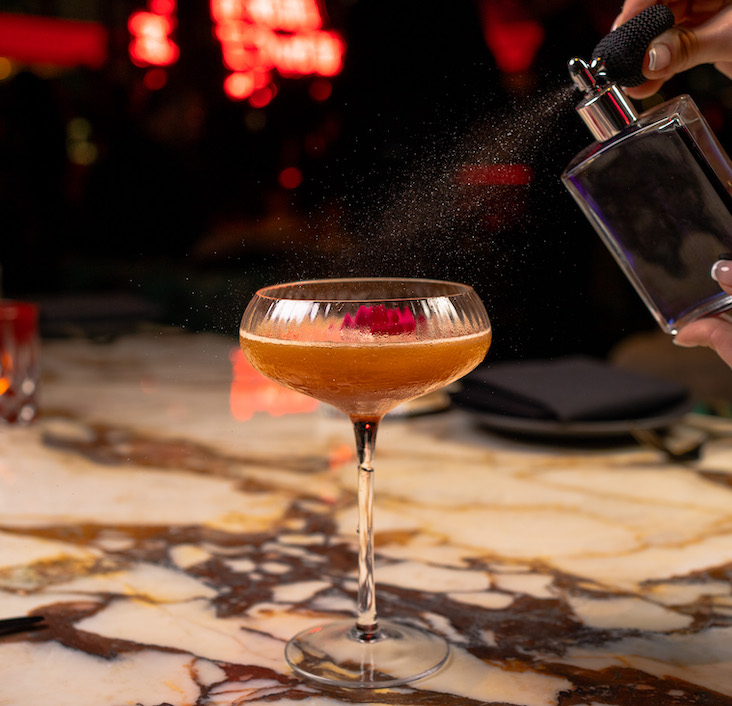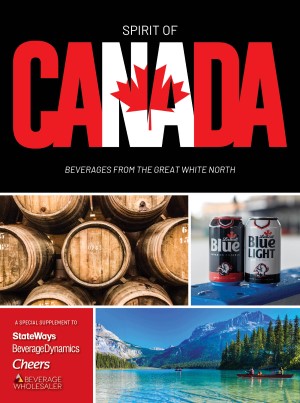The best way to understand the state of the beer menu in most bars and restaurants today is to recall wine lists in the early 1970s. Back then, hindered greatly by consumer ignorance and a paucity of expertise on the restaurant side, many if not most wine menus were confusing, minimalist affairs, categorized by country and color, if at all, and often featuring whatever wines the bar manager could get his or her hands on.
Of course, that also was back when North America was only beginning its love affair with wine, long before we openly debated the pros and cons of oaked versus unoaked chardonnays and solemnly considered the ramifications of an upward creep in the alcohol contents of cabernet sauvignons and zinfandels. As the old saying goes, we’ve come a long way, baby.
Beer today is much like wine 40 years ago, with consumers just beginning to understand the nuances. And as consumers increasingly understanding how an American pale ale differs from the British version and why more bitter sometimes really is better, the pressure is on restaurateurs to improve their beer menus as they did with their wine lists decades ago.
The question is, where to begin?
According to the men behind the beer lists at two of America’s largest specialty beer bar chains, the answer is to start local.
“Whenever we’re making a new beer menu, we always start by cherry-picking the best of what the regional brewers provide,” says Keith Schlabs, beer manager for the 13-unit, Dallas-based Flying Saucer chain. “We do this to support the industry, show love to the local guys and work hard to get the best of their beers moving.”
Kip Snider agrees, director of beverage for 23-unit, Irvine, Calif.-based Yard House. “With a new beer menu, we’re looking at three things: regionality, season and style,” says Snider.
It’s not just the multiple location, 50-plus tap guys who are concerned with supporting the local scene, either. At bars such as Grace Tavern in Philadelphia and The Publican in Chicago, forming relationships with area brewers is high on the agenda. “We do our best to foster relationships with the regional brewers,” says Michael McAvena, beer director for The Publican. “So, about four or five of our 12 taps are dedicated to specific breweries. We have a special relationship with Goose Island Brewing, for example, so their Matilda, a dry-hopped Trappist ale, is almost always on tap.”
As Snider notes, seasonality also should be a beer menu concern. Just as better restaurants will alter their food menus to suit the weather, so should beverage managers be conscious of which beer styles work best for a given season. Crisp and refreshing pilsners, for example, tend to sell better when summer hits, while demand for full-bodied and treacley Scotch ales and malty and potent abbey ales likely are to be stronger when the snow flies.
Balancing the Beer List
While offering local and seasonal beers is important, successful operators also strive to menu a variety of styles. This should go beyond “domestic,” “premium” (or “microbrews”) and “imported” –or by country of origin–which is of little use to the modern, educated beer drinker. With the massive range of styles, strengths and characters being brewed today, consumers deserve and demand more specificity from the list.
“We always look closely at style, running through all the different types of ales and lagers,” says Schlabs. “Then, once we see what we’ve got, we try to fill in where our selection is thin.”
One example Schlabs offers is altbier, a fairly refreshing variety of ale native to the German city of Düsseldorf that sometimes is hard to find in the States. “When we see a style gap like that, we try to get the distributor to bring in one or two examples,” says Schlabs. “Once they see that we really want to move the brand, they’ll start stocking it on a more regular basis.”
For his part, Snider is concerned not just with stocking the various styles, but making sure the customers understand them. “I think we’re training our guests more than ever before,” he says. “We have our menu broken down by ales and lagers first, and then by individual style, so we’re trying to get our guests to understand what those styles mean and enable them to better appreciate the beers.”
Of course, not all bars and restaurants have the fridge and tap space to even hope to address the multitude of beers styles available these days, which is why more establishments lately have gone the specialization route. The focus could be on a given country, as with the Belgian emphasis at places such as La Trappe Café in San Francisco, Brouwer’s Cafe in Seattle and Eulogy Belgian Tavern in Philadelphia, or even on a certain style, as witnessed at New York City’s Stout, where the emphasis, not surprisingly, is on stout.
Or the organizational key could be the food. At The Publican, utility at the table figures greatly into whether or not a beer will be listed. “How well the beer pairs with our menu greatly influences my choices,” says McAvena.
Often this idea can march lockstep with the notion of country specialization, as with Belgian beer complementing a Belgian menu, German beer matching a German menu, English ales at a pub, and so on. Where it falls apart, however, is when the beers of a country that lacks a true brewing history are partnered with the same nation’s cuisine without anyone taking the time first to see if the flavors work together.
India and Mexico, for example, each are countries without indigenous brewing cultures, beer having been brought to both lands by foreign explorers. While it is true that the peoples of Mesoamerica did brew a drink called chicha, this bears very little similarity to the beer of today. Neither cuisine was developed alongside any brewing tradition, so there is no reason to believe that the modern beers of either nation should pair well with the country’s food. And in many cases they do not.
Even bottle size is a factor worthy of consideration when assembling a beer list. Where some believe that a smaller format is better for ease of selling, service and sampling, such as The Publican’s McAvena, others wholeheartedly embrace the sharing potential of larger format beers such as the 750-ml., cork-finished bottle of many Belgian and a growing number of American craft-brewed brands.
“Our whole concept is sharing,” says Brian McKeaney, owner of Rush Street in Culver City, Calif., where a selection of large format beers is assembled on the menu under the heading, “Share Freely.” “We stress that a group can order two or three of these bottles and share them around the table. Since we cater to so many large parties, for us the 750-ml. bottle is a good fit.”
Ultimately, however, whether choosing by style, country, regionality, format or menu compatibility, perhaps the best gauge of what should be added to or subtracted from the beer list comes from educated and aware front-of-the-house staff. “The servers are the ones in the trenches,” says the Yard House’s Snider, “so I ask them constantly about what people are asking for.” To this end, Snider adds that he also takes pains to make certain the staff is armed with the information necessary to know what they’re talking about.
“Whenever we have a new beer list coming up, we’re out there two weeks beforehand training the staff on the new beers,” continues Snider. “That way, they know what each one tastes like, what its style is, how strong it is and so on.”
With that kind of knowledge and feedback mechanism in place, managing a beer list becomes a far simpler task–and makes it easy to avoid disappointing an increasingly beer-savvy public.
“It truly frustrates me when I go into a good restaurant and see a beer list that is the equivalent of a wine list made up of all chardonnays,” says the Flying Saucer’s Schlabs. “It simply does a disservice to the customer.”
Just like many wine lists 40 years ago.



